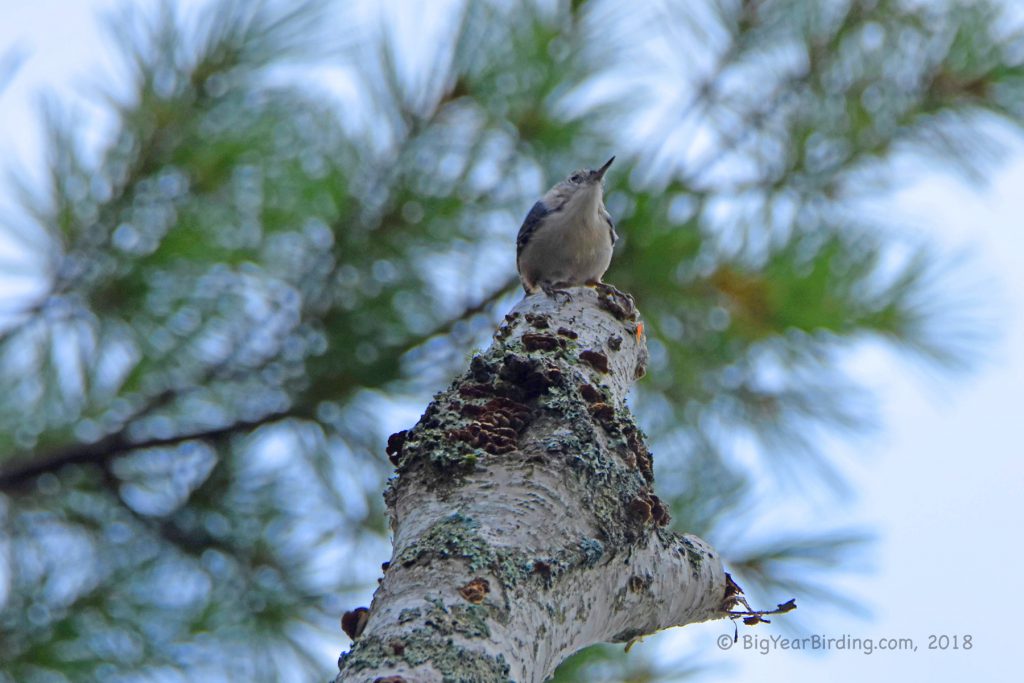
The White-breasted Nuthatch is a small, non-migratory songbird that is found throughout most of North America. It measures approximately 5.5 inches in length and has a wingspan of approximately 8.5 inches. It weighs around 0.8 ounces and has a short, pointed bill.

The White-breasted Nuthatch is easily identified by its distinctive appearance. It has a blue-gray back, white face, and black cap. It also has a large white patch on its chest, which is where it gets its name. The wings and tail of the White-breasted Nuthatch are a dark gray, and it has a distinctive “upside-down” posture when it climbs down tree trunks headfirst.
White-breasted Nuthatches are non-migratory birds, meaning they stay in their breeding range year-round. They can be found in a variety of habitats, including deciduous and mixed forests, parks, and residential areas. During the breeding season, White-breasted Nuthatches can be found throughout most of the continental United States and southern Canada.

The White-breasted Nuthatch is a cavity-nesting bird, meaning it nests in tree holes or crevices. They will also use nest boxes, and will occasionally take over abandoned woodpecker nests. During the breeding season, the female will lay 5-9 eggs, which she will incubate for 12-14 days. After hatching, the young will remain in the nest for 18-26 days before fledging.

Overall, the White-breasted Nuthatch is a charming and distinctive bird that can be easily identified by its unique appearance and upside-down climbing posture. While they are non-migratory, they are still an important part of North America’s avian biodiversity and a joy to observe in the wild.
